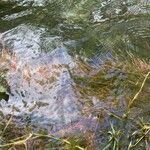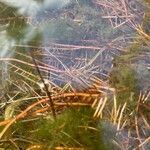Stems very slender; no turions; most internodes under 1 cm; lvs whorled, to 1(–3) cm, often shorter than the internodes; spikes emersed, 2–5 cm; bracts mostly alternate, lance-linear, entire or minutely callous-serrulate, shorter than or about equaling the fls, or the very lowest pinnatisect and exceeding the fls; mericarps 1.5 mm, truncate, rounded on the back and at base, minutely granular-roughened; 2n=14. Greenl. to Nf., Mass., N.Y., and Ont.; Europe.



